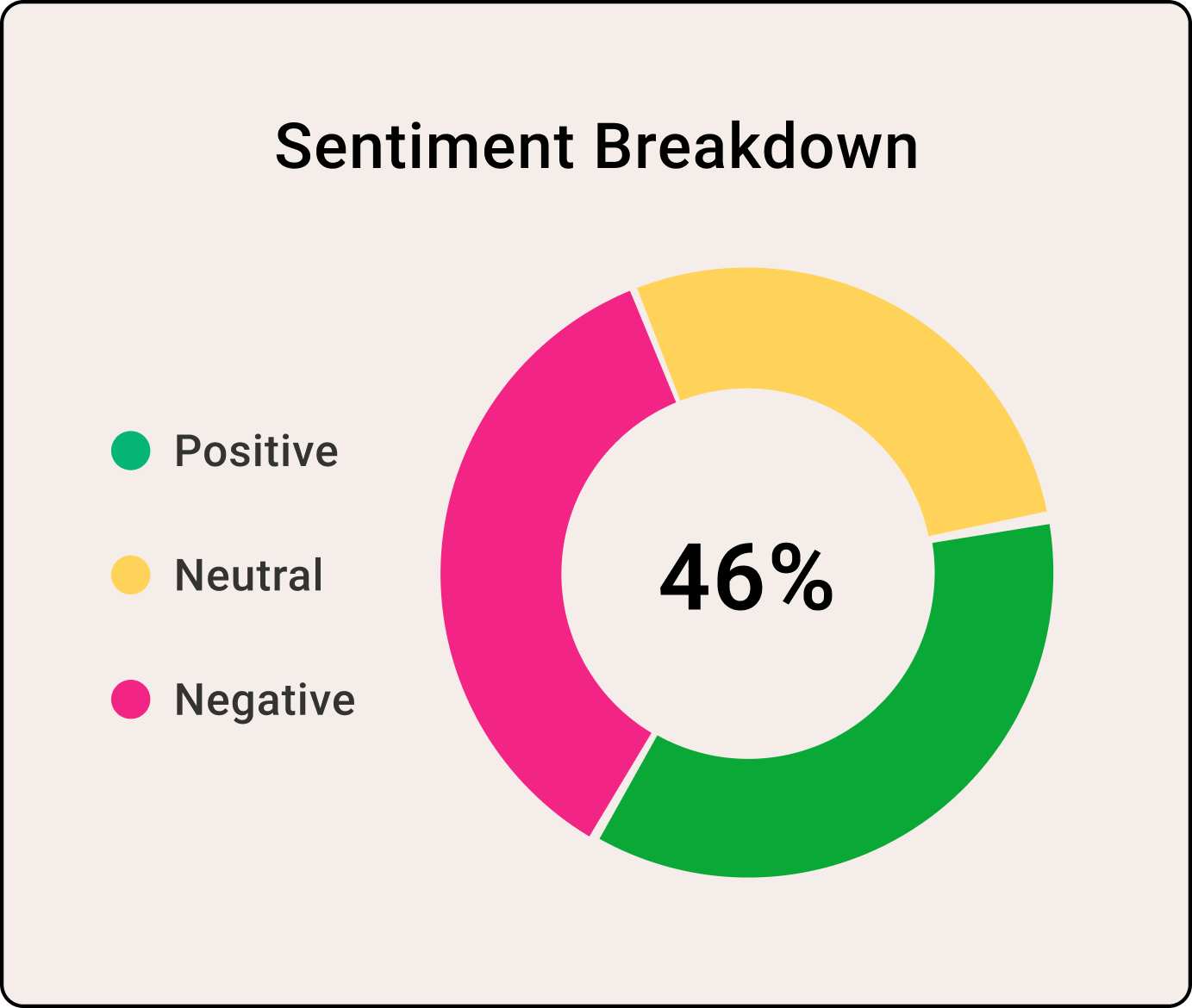In today’s digital world, every tweet, review, and comment is a goldmine of customer feedback. But sifting through countless opinions to discover actionable insights can feel like searching for a needle in a haystack. That’s where an online sentiment analyzer comes in—transforming raw text into clear, data-driven strategies. In this blog, we’ll explore why sentiment analysis matters, outline key features to look for, highlight the game-changing AIM Insights module, and show you how to leverage sentiment data to boost customer satisfaction, brand reputation, and revenue.
Why Online Sentiment Analyzer Is a Must-Have Tool

With over 4.5 billion social media users worldwide, your brand’s reputation is constantly under the microscope. Here’s why integrating an online sentiment analyzer into your toolkit is essential:
- Real-time Monitoring
Track brand mentions as they happen, so you can respond quickly to both praise and crises. - Data-Driven Decisions
Move beyond gut instinct—leverage quantified sentiment scores to guide marketing, product development, and customer service. - Competitive Edge
Compare your sentiment trends against competitors to discover opportunities and threats before they become headlines. - Improved Customer Experience
Identify pain points and celebrate wins to tailor offerings that resonate with your audience.
Key Features to Look for in an Online Sentiment Analyzer
Not all sentiment tools are created equal. When vetting solutions, prioritize platforms that offer:
-
Multilingual Support
-
Analyze feedback in dozens of languages.
-
Detect slang and regional idioms for more accurate insights.
-
-
Granular Sentiment Scoring
-
Beyond “positive” and “negative,” get nuanced labels like “mixed,” “neutral,” or “very positive.”
-
Drill down to sentence- or aspect-level sentiment for pinpoint analysis.
-
-
Customizable Taxonomies
-
Define categories that match your business (e.g., product quality, customer service, pricing).
-
Tag and filter mentions by topic or department.
-
-
Integration Capabilities
-
Seamlessly connect to social platforms (Twitter, Facebook), review sites (Yelp, TripAdvisor), and help desks (Zendesk, Salesforce).
-
Export data to your BI or CRM system with APIs or pre-built connectors.
-
-
Automated Alerts & Dashboards
-
Set up real-time notifications for sentiment spikes or dips.
-
Access intuitive dashboards for at-a-glance performance metrics.
-
How Businesses Benefit from Sentiment Analysis
1. Crisis Management
- Fast Detection: Pinpoint negative sentiment surges before they spiral.
- Swift Response: Dispatch targeted messaging to calm dissatisfied customers and mitigate PR fallout.
2. Product Innovation
- Voice of the Customer: Gather feedback on new features, beta releases, and product launches.
- Iterative Development: Prioritize enhancements that address the most common complaints.
3. Marketing Optimization
- Message Testing: A/B test campaign copy to identify the wording that resonates best.
- Channel Strategies: Discover which platforms generate the most positive buzz.
4. Customer Service Excellence
- Priority Support: Route high-intensity negative mentions to senior reps for expedited resolution.
- Training Insights: Highlight common service gaps to focus staff training efforts.
Spotlight on AIM Insights
When it comes to diving deeper into sentiment data, AIM Insights stands out as a powerhouse module designed for advanced analytics and strategic foresight. Here’s what makes AIM Insights essential:
- Advanced AI Models
Leverages state-of-the-art machine learning and natural language processing to detect sarcasm, irony, and subtle emotional cues that basic analyzers miss. - Predictive Trend Analysis
Forecast sentiment trajectories over time, helping you anticipate shifts in public opinion before they happen. - Competitive Benchmarking
Automatically pull in competitors’ sentiment data to measure your performance against industry averages. - Custom Alert Rules
Create multi-condition triggers (e.g., “Notify me if negative mentions of ‘shipping’ exceed 10% week-over-week”). - Deep-Dive Reports
Generate white-label PDF and interactive HTML reports tailored for C-suite presentations, complete with visualizations and narrative summaries.
Use Case: A leading e-commerce brand used AIM Insights to uncover rising frustration around delivery times. By proactively negotiating with their logistics partner and updating customers with real-time tracking, they reduced negative delivery mentions by 35% within two months—boosting overall sentiment by 20%.
Best Practices for Implementing an Online Sentiment Analyzer
-
Define Clear Objectives
-
Are you focusing on brand health, product feedback, or customer service?
-
Set measurable goals (e.g., reduce negative sentiment by 15% in Q4).
-
-
Establish Your Taxonomy
-
Categorize mentions by themes (price, quality, support).
-
Ensure consistency by training internal teams on tagging guidelines.
-
-
Integrate Across Departments
-
Share sentiment dashboards with marketing, product, and support teams.
-
Host monthly “sentiment review” meetings to translate insights into action plans.
-
-
Calibrate and Refine
-
Periodically review sentiment model accuracy.
-
Adjust keyword lists and sentiment thresholds based on evolving brand voice and industry jargon.
-
-
Close the Feedback Loop
-
Communicate back to customers when their feedback leads to changes (“You spoke, we listened”).
-
Publicize improvements on social media and newsletters to showcase responsiveness.
-
Measuring ROI: The Impact of Sentiment Analysis
To justify the investment, track key metrics before and after implementation:
-
Sentiment Score Trends
-
Monitor your average sentiment score across channels.
-
-
Volume of Alerts Resolved
-
Track how many alerts triggered interventions and their outcomes.
-
-
Customer Satisfaction (CSAT) & Net Promoter Score (NPS)
-
Correlate sentiment improvements with survey-based satisfaction scores.
-
-
Conversion Rates & Revenue
-
Measure changes in sales, subscriptions, or renewal rates tied to sentiment-driven campaigns.
-
By quantifying these metrics, you’ll demonstrate how an online sentiment analyzer—backed by powerful modules like AIM Insights—drives tangible business results.
Ready to harness the full power of sentiment analytics? Request a personalized demo from AIM Technologies today and discover how our platform can turn every comment into a conversation and every opinion into an advantage.




